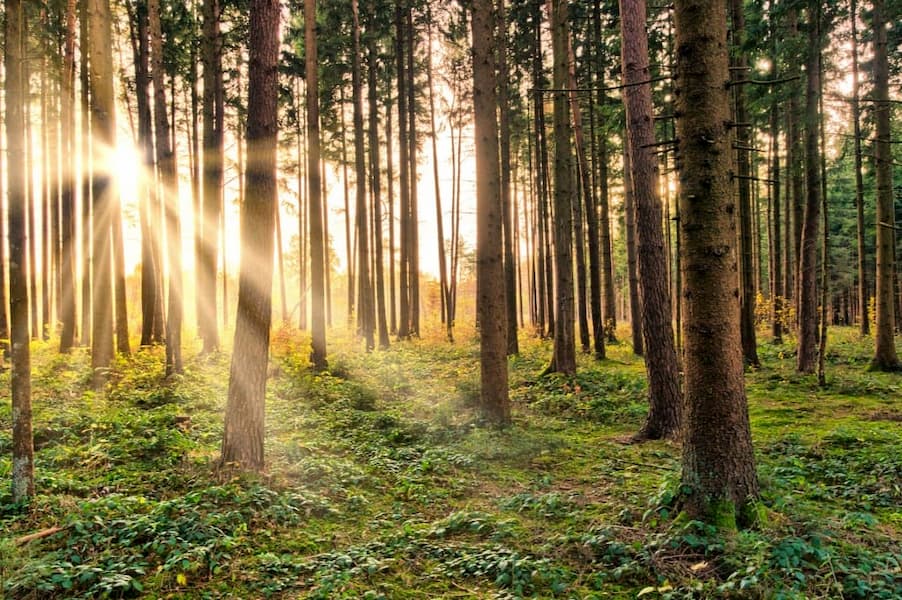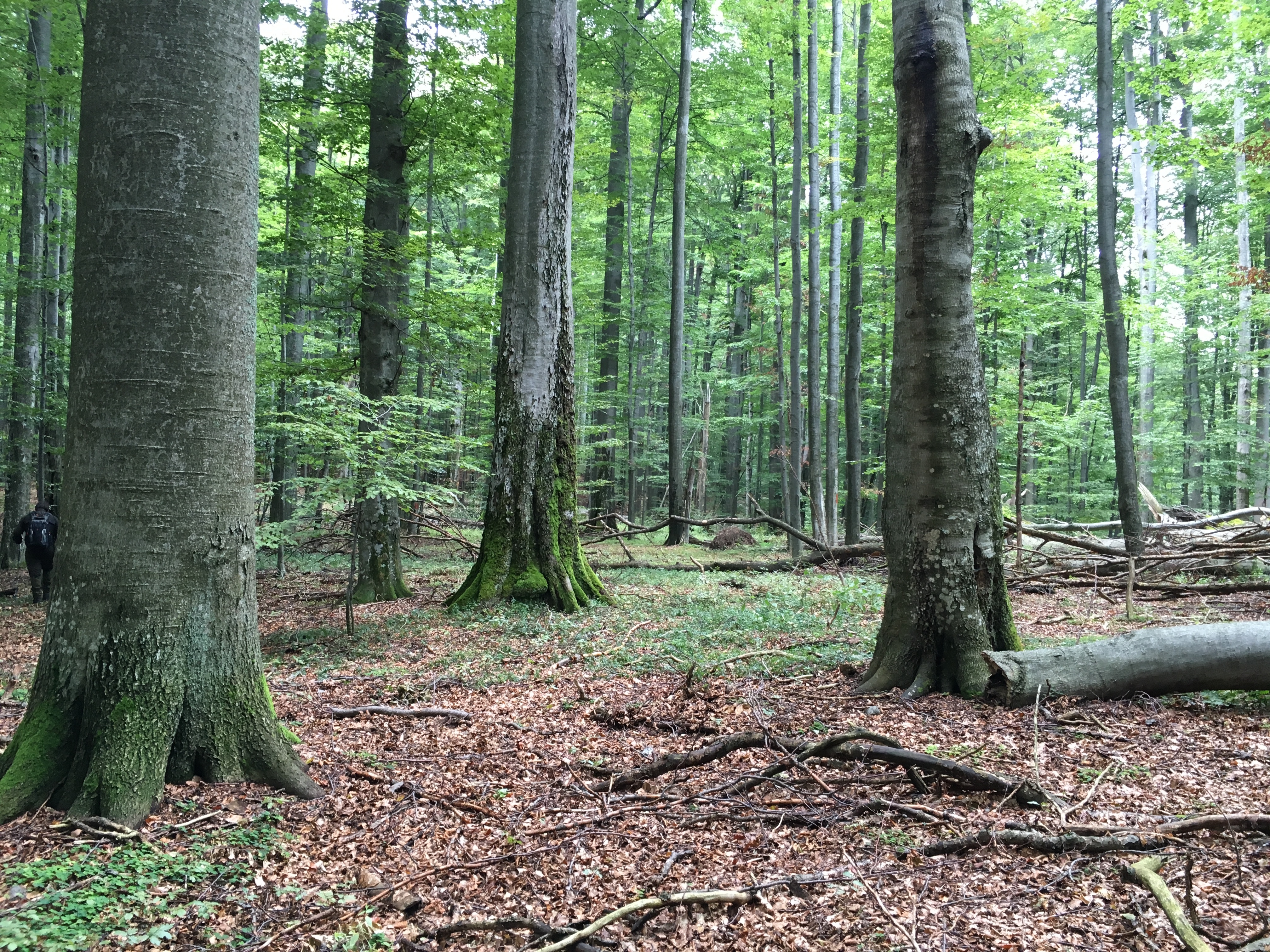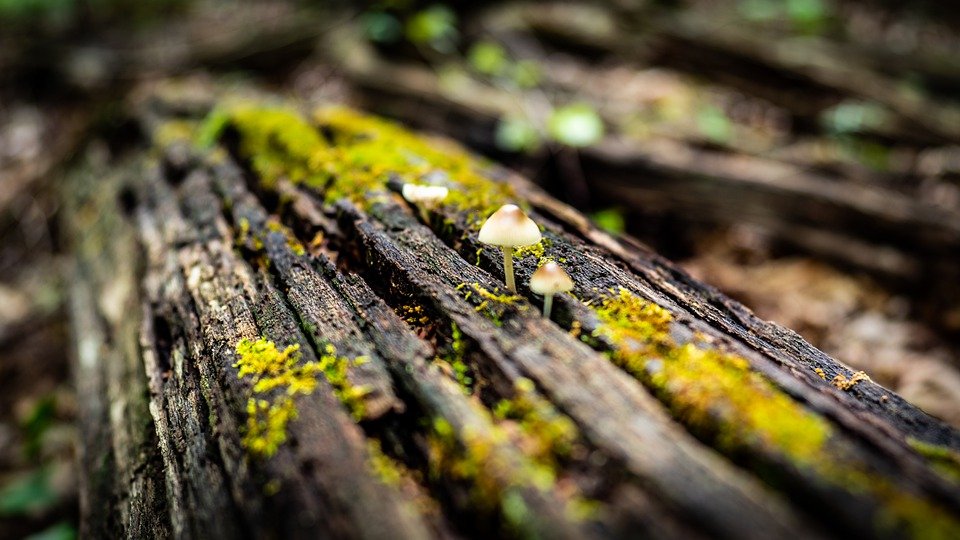

13 Jan The Forest | Intervene or let go?
by Hanne Sinninghe
Everyone has a relationship with a forest in some way. Some have grown up in it, feel at home in it. The other sees the forest as an obligatory outing with the family and wants to return home as quickly as possible. You can see a forest as a place to discover and learn things. A world full of life. Or it can be a quiet oasis where you can retreat and unwind.
How you look at a forest and how you ‘use’ a forest is therefore different for everyone. Also from an economic and social perspective you can ‘use’ the forest in different ways. In recent decades there has been increasing discussion on this subject.
Due to the changing climate and a greater awareness of the value of nature and the importance of a green living environment, more and more people are against cutting down trees and interfering in the natural environment. But what is actually the reason that, in this case in forests, ‘intervention’ (or forest management) takes place and what would happen if we let nature take its own course?
A LIVING FOREST
A forest is an ecosystem that is constantly changing. When you walk through it, at first glance it looks like a static entity. Nothing much changes. Trees are always in the same place and the change of seasons is the biggest spectacle of the year. Yet a forest is always moving, although it does so slowly that you can hardly see it.
Trees get a little bigger by time; every year a tree ring is added and a few inches grow on the branches. Slowly but surely, a tree takes up more space, causing the trees around it to have to swerve or even die. This creates a competition that we cannot see, but which is already present from the moment the seed of a tree touches the ground. In this fact lies the greatest dilemma when it comes to forest management.
How much space is available in a forest? Do we want an ‘open’ or ‘dense’ forest? How many different types of trees do we want to see? Which tree gets more space, is it the beech or the oak? What is the purpose of a plot, is it a production forest or a recreational site*? To be able to make these choices, it is important to understand how a forest grows and ‘works’.
One of the last natural forests in Europe; the forest reserve ‘Nera’ in Romania. Picture by: Simon Klingen
*In the Netherlands, forests have had a multifunctional purpose since half a century: to contribute to nature, recreation and wood production. When it comes to nature and recreation, the forest serves flora & fauna (enhancing biodiversity) and man respectively. When it comes to wood production, the emphasis is on ‘growing’ wood as a product. Whereby the way of growing (beautiful straight trunks) has a different approach than when you let a tree take its own course.
GROWTH CONDITIONS
Each tree species has its own needs and growth conditions. An Oak needs a lot of light and is a slow grower. Poplar and Douglas Spruce also like a lot of light but grow much faster. A Beech can stand in a shady spot and can therefore survive in almost any place, but it’s thick foliage simultaneously ensures that it is too dark for other tree species.
So in order to survive, there is a constant struggle for light and space. The trees that need a lot of light shoot up into the air in their first years and conquer a spot. The more space there is in the top, the wider the canopy and the wider the trunk becomes. So the thickness of a trunk says nothing about how old a tree is. A thin tree can be just as old as a thick tree, only the thick tree has more space in the top and thus a larger crown. Other light-loving tree species that do not grow as fast therefore do not stand a chance and die.
If a large tree dies of old age or is blown over by a big storm, it remains to be seen who will claim this new light spot. The already existing light-lovers around it get the chance to broaden their foliage, or a new species from below that might grow faster and reach the top in time.
A typical Beech forrest in the Netherlands. Picture by: unknown
INTERVENE OR LET GO?
All the different light and growth needs create “forest layers” in which light-lovers, half-shadow-lovers and shadow-lovers live together. This sounds like a good balance and like a forest we enjoy visiting and seeing. The greater the diversity of trees, the better this is for biodiversity.
However, in this slow process of the growing forest, there is an expiration date to this cycle. When the light-loving trees (e.g. Oak, Birch, Scottish Pine and Larch) die of old age (this varies from 30 to about 150 years) this upper tree layer will disappear, and the shade-loving trees (Beech, Norway Spruce, Linden) that have grown up for years under the canopy will have room to grow on. Because no new trees have grown up under this thick forest layer because it is too dark there, only a shade-loving tree species will remain. In the Netherlands this is usually the Beech.
When you don’t intervene you will eventually get a rather monotonous forest with few different species. A so-called ‘primeval forest’ (A very rare occurrence. The Bialowiezaforest at the border of Poland and White-Russia is one of the last primeval forests in Europe) is very special because it has not been interfered with for hundreds of years, but there is a monoculture of only a few species, and therefore little biodiversity.
By leaving dead tree trunks you give other organisms a place to grow. Photo: Pixabay.
CONCLUSION
Thus, with this knowledge in mind, human intervention in forests has several advantages. By intervening (or managing) and cutting or ringing (letting trees die off slowly but leaving the old wood as a ‘natural insect hotel’ or shelter for birds) you can make room for already existing trees and give them a greater and longer chance of survival. Or, you make room for new trees and give new species a place where they normally would not be able to grow on their own. In this way you can make a combination between using trees for wood production and increasing the species in a forest and create multiple ecosystems and greater biodiversity.
When you want to judge a forest on its nature quality, in theory the following applies: look at the composition of the tree and shrub layer: the more mixed, the better. Preferably with a large proportion of indigenous species with different leaf and branch structures and the occasional piece of dead or rotting wood for the smaller organisms.
As crazy as it may sound, sometimes nature can use a helping hand. Perhaps we should no longer see it as ‘interfering’ but as ‘working together’, to create a beautiful diverse natural picture in which we can voluntarily, or sometimes reluctantly, disappear for an afternoon.
Source reference:
- Book ‘Twaalf boslessen’ – Simon Klingen
- https://www.staatsbosbeheer.nl





